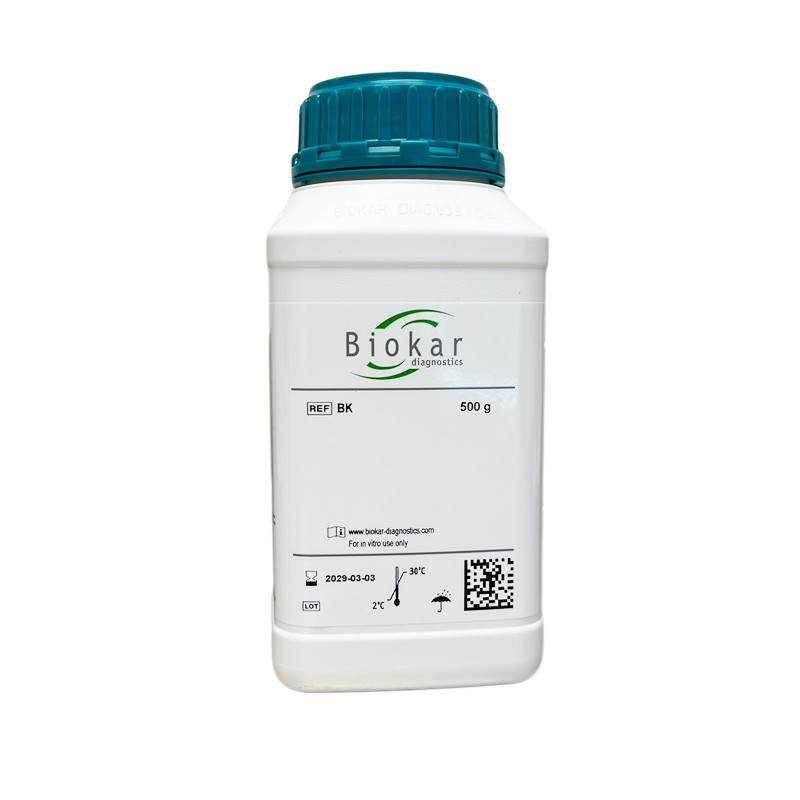- +Products
- +Allergen testing
- +Culture Media - reagents and reference material
- +Environmental testing solutions
- +Laboratory Consumables
- +Laboratory equipment
- +Microbiology equipment
- +Neogen® Food Safety Solutions
- +Temperature & Humidity Monitoring
- Services
- Support
- News
- +About Us
- Contact




Hektöen Enteric Agar
Hektoen Enteric Agar is a selective medium for the isolation and differentiation of pathogenic enterobacteria from biological samples of animal origin, water samples, dairy products and other food products. It is used in animal health in the context of Salmonella detection in mammals (NF U47-102). The medium is also recommended for the detection of Shigella, in food microbiology (NF EN ISO 21567).
Hektöen Enteric agar can also be used as the second media of choice in the standardized methods for the detection of Salmonella.
Available as dehydrated medium : 500 g bottle
In compliance with regulatory requirements, a USDA permit (VS 16-3) is mandatory for shipments from Canada to the USA due to the inclusion of peptone, an animal byproduct.
Gram-positive flora are inhibited by bile salts which can also slightly inhibit the growth of a few Gram-negative microorganisms.
The medium contains three carbohydrates: lactose, sucrose and salicin. The high lactose concentration favors the visualization of enterobacteria by avoiding the problem of late fermentations. The other carbohydrates were added to insure a higher degree of differentiation and to reduce the toxicity caused by colored indicators so as to obtain excellent recovery of Shigella.
The principle of visualization is founded on the eventual fermentation of the 3 sugars present in the media. The microorganisms that ferment at least one of them form salmon-colored colonies, the others give rise to blue or green colonies. The color indicator system, composed of bromothymol blue and acid fuchsin, yields orange-yellow colonies for lactose-positive enterobacteria and blue-green colonies in the case of lactose-negative strains.
In the presence of sodium thiosulfate, H 2S producing bacteria reduce ferric ammonium citrate and are detected by darkening due to the production of iron sulfide at the center of the colonies.




